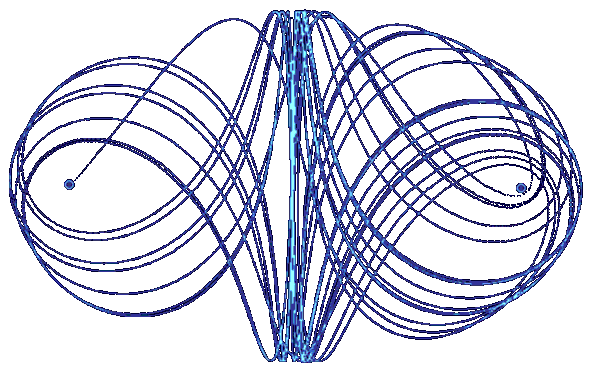
|
"Random Attractors" |
|
All the images
have the same scale. © Sylvain Timsit , 1998 |
image from the simulator after 3 seconds...
 .........
.........
image after 1 minute...
 .............
.............
image after 2 minutes...

image after 10 minutes...

|
"Gravitation Attractors" |
|
These images are
made by a gravitation simulator, a software developped by
Jeff Rommereide, You simply create
the stars, planets, or astéroïds in the
space, You can also
create some chaotic planetary system. |
"Attractors Balance"

Trail of a planet which hesitate
between the attraction field of two close stars.
At the begining of the simulation, the planet is positioned at the
center, at equal distance from the two suns,
with a slight starting inpulse toward the top.
The planet will wave between the
2 stars, as a piece of metal placed between 2 magnets of same
force,
, and successively orbit around each star.
The planet ends in a final scratch on the left star.
"Flower of Infinity"

Trajectory of a planet around a
double star.
The double gravity field create a slighty elliptic orbit which shift
the trail at each turn.
Contrary to the previous
system,
this one is very stable and can maintain itself
indefinitely..
"Lotus"

Same kind of system as in the previous one.